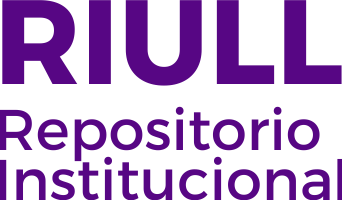Sellado de vías venosas periféricas
Author
Pérez Báez, SamuelDate
2019Abstract
Las vías venosas periféricas permiten el acceso inmediato al torrente
sanguíneo, lo que aumenta la biodisponibilidad del principio activo, así como su velocidad
de absorción respecto a otras vías de administración. La mayoría de los pacientes
hospitalizados suelen ser portadores de catéteres intravenosos periféricos.
Los profesionales enfermeros son los responsables de manejar estos dispositivos
de forma correcta e intentar conseguir el mejor índice de efectividad.
La variabilidad de los criterios a la hora de sellar una vía periférica son reales y, por
ello, es imprescindible llegar hacia una unificación de conceptos para intentar solventar
este problema intentando unificar la actividad enfermera respecto a la evidencia científica
y caminar todos hacia un sentido.
La eficacia de los métodos para sellado de catéteres venosos periféricos se
comprobó mediante la consulta bibliográfica de artículos científicos.
No hay estudios concluyentes que aseguren la efectividad de un método frente a
otro, ya que la variabilidad de resultados utilizando suero fisiológico al 0,9% NaCl, frente a
la heparina sódica es prácticamente similar.
Sin embargo, esta revisión parece demostrar que la heparina sódica (Fibrilin)
puede no ser más efectiva a la hora de sellar un catéter venoso periférico que el suero
fisiológico, pero sí evita complicaciones posteriores como es la deposición de fibrina y esto
reduce los riesgos de sufrir embolias pulmonares. Peripheral venous catheters permit the direct access to the blood torrent, this
increases the bioavailability of the drug and modifies the pharmacokinetics, having better
absorption compared to another routes of administration. The majority of
hospitalized patients tend to be carriers of peripheral intravenous catheters. Nursing
professionals are responsible for managing these devices correctly and trying to achieve
the best effectiveness rate.
The variability of the criteria when sealing a peripheral road is real and therefore it
is essential to arrive at a unification of concepts to try to solve this problem. That is to say,
to try to unify the nursing activity with respect to the scientific evidence walking all towards
a the same direction.
This analysis is based on a bibliographic review of scientific articles that will allow to
draw conclusions regarding the efficacy of methods for sealing peripheral venous
catheters.
There are no conclusive studies to ensure the effectiveness of one method
over another, since the variability of results using 0.9% Na physiological saline, compared
to sodium heparin is practically similar.
However, this review seems heparin sodium (Fibrilin) may not be more effective
when sealing a peripheral venous catheter than physiological saline, but it avoids later
complications such as the deposition of fibrin and this reduces the risk of pulmonary
embolism.





